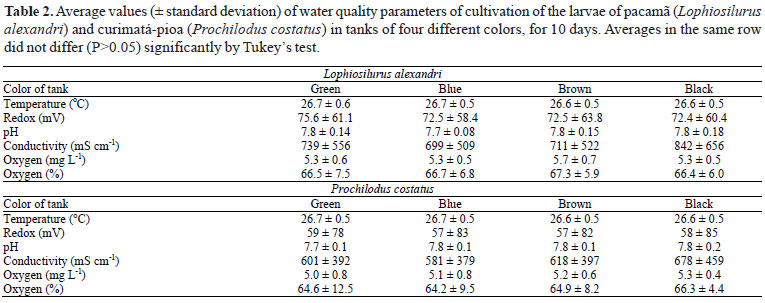The influence of tank color on the visual perception of fish larvae and the success of their cultivation depends on the characteristics of each species combined with environmental factors. In this study, we determined the effect of light and dark tank colors on the larviculture of pacamã (Lophiosilurusalexandri), a species with a benthonic habit, and curimatá-pioa (Prochilodus costatus), which swims actively in the water column. Larvae of pacamã and curimatá-pioa were cultivated for 10 days in 5-L tanks, at a density of 15 larvae L-1 and luminosity of 141.7 ± 8.95 lux, and fed Artemia nauplii. Four tank colors were used: green, light blue, brown, and black (with four replications). Survival, biomass and Fulton's condition factor for pacamã larvae were similar in the different colored tanks. However, the larvae in the green tanks showed lower weight than those cultivated in black and brown tanks, as well as shorter total length than that of larvae in the brown-colored tanks. These results are probably due to the association between tank color and benthonic habitat of the pacamã. For the curimatá-pioa, survival and biomass were similar for the different colors. The weight and Fulton's condition factor were higher for the larvae cultivated in green and blue tanks. This result could be associated with the adaptation of curimatá-pioa larvae to active swimming in the water column, searching for prey.
Endemic; Lophiosilurus alexandri; Prochilodus costatus; rio São Francisco; Visual perception




